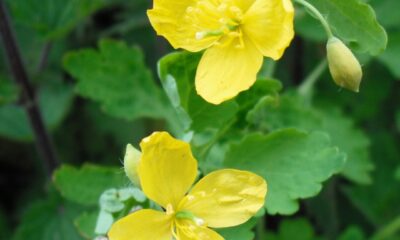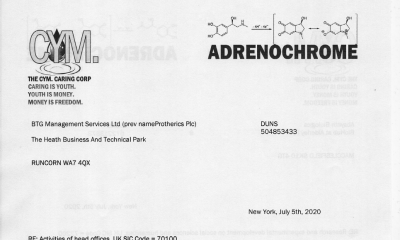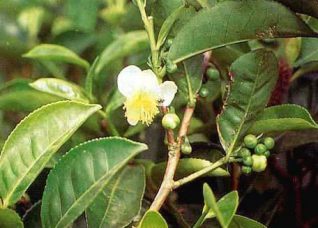Dimitrios Moustakas, 2 , 3 Michael Mezzio, 2 Branden R. Rodriguez, 2 Mic Andre Constable, 2 Margaret E. Mulligan, 2 and Evelyn B. Voura 1 , 2 ,*
Christian Holscher, Academic Editor
Abstract
The stimulant effect of energy drinks is primarily attributed to the caffeine they contain. Many energy drinks also contain other ingredients that might enhance the tonic effects of these caffeinated beverages. One of these additives is guarana. Guarana is a climbing plant native to the Amazon whose seeds contain approximately four times the amount of caffeine found in coffee beans. The mix of other natural chemicals contained in guarana seeds is thought to heighten the stimulant effects of guarana over caffeine alone. Yet, despite the growing use of guarana as an additive in energy drinks, and a burgeoning market for it as a nutritional supplement, the science examining guarana and how it affects other dietary ingredients is lacking. To appreciate the stimulant effects of guarana and other natural products, a straightforward model to investigate their physiological properties is needed. The planarian provides such a system. The locomotor activity and convulsive response of planarians with substance exposure has been shown to provide an excellent system to measure the effects of drug stimulation, addiction and withdrawal. To gauge the stimulant effects of guarana we studied how it altered the locomotor activity of the planarian species Dugesia tigrina. We report evidence that guarana seeds provide additional stimulation over caffeine alone, and document the changes to this stimulation in the context of both caffeine and glucose.
Go to:
Introduction
Caffeine is considered the major stimulatory constituent of energy drinks while sugars and other substances such as guarana, taurine, and ginseng are added, often with combinations of vitamins, to formulate different blends [1, 2]. Energy drinks have become an accepted means to increase cognitive ability, memory, alertness, physical performance and cardiovascular output [3–10]. But while energy drink use continues to rise, concerns have been raised about their high caffeine content and with it, the risks associated with their consumption particularly by young people [1, 8, 11–15]. The use of guarana and other plant-based materials can further increase the caffeine content and general stimulant properties offered by these beverages, but because they are considered herbal supplements, these plant-based additives are not subject to the same reporting requirements as are sugars and caffeine. Consequently, the concentration of these supplements, let alone what they might contain, are typically not reported in energy drink formulations. This lack of understanding brings into question how the combination of the resulting ingredients might work together to affect the health of those consuming the foods that contain them [2, 12–14, 16–18].
Guarana (Paullinia cupana) is a species of climbing plant native to the Amazon that is known as an antioxidant, traditional medicinal, and an effective stimulant [19–25]. Recent work also examined the use of guarana to counter fatigue and depression associated with cancer treatment [26–28]. The main component of guarana attributed to these beneficial properties is caffeine, which, depending on how the extract is prepared, can be more than four times the amount found in coffee beans [19, 29]. In addition, other components of guarana seeds are also thought to provide extra stimulant effects above those of caffeine alone [19–23, 30]. As such, herbal products such as guarana offer an attractive additive to the manufacturers of many popular energy drink formulations, despite the lack of research focused on the associative properties of plant-based extracts with other dietary supplements, drugs and stimulants, [29].
To assess the role of guarana as a stimulant in comparison to caffeine alone, we developed a simple, easily controllable system using the planarian, Dugesia tigrina, a free-living aquatic flatworm, as a model organism. Planarians are most often used in studies focused on tissue regeneration and repair due to their exceptional regenerative capacity [31]. Planarians also lend themselves well to stimulant studies they because they possess a basic bilateral symmetry and corresponding central nervous system that uses neurotransmitter systems comparable to those found in mammals [32–39]. Planarians prefer darkness and use photoreceptors to detect and react to light. As such, planarians are capable of maze learning and can develop a conditioned response to light that can be implemented in behavioral studies including those subject to drug modification [40, 41]. Planarian motility assays have also been developed for studies examining substance addiction and withdrawal [42–53]. Because the planarian motility assay offers a simple, easily controlled system to monitor the effect of stimuli, we adopted the assay for use in our study of guarana. Previous studies also indicated that caffeine does not cause a significant increase in planarian activity [47, 50]. This observation provided an added incentive to use the planarian for our work in that it provides an opportune background to examine the tonic effects of guarana separate from those provided by caffeine.
By observing changes in planarian motility with exposure to guarana, caffeine and glucose, we determined that guarana seeds contain an additional stimulant over caffeine alone, and that glucose can support these tonic effects. We also provide evidence that guarana offers a short-term added benefit when combined with caffeine. Our data also suggest that the combination of guarana, caffeine and glucose provides a short-term stimulus at low concentrations.
Guarana – LIFE FORCE HEALTH CENTER
Reference:
https://www.ncbi.nlm.nih.gov/pmc/articles/PMC4399916/


 Alternative Health2 years ago
Alternative Health2 years ago
 Life Force Network2 years ago
Life Force Network2 years ago
 Alternative Health1 year ago
Alternative Health1 year ago
 Life Force Network2 years ago
Life Force Network2 years ago
 Alternative Health2 years ago
Alternative Health2 years ago
 Military2 years ago
Military2 years ago









